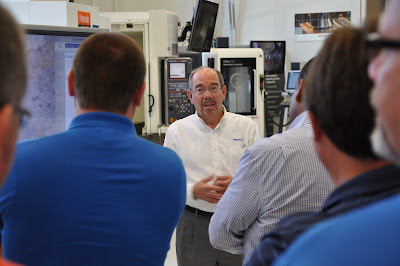All students learn differently, and nowhere is this more evident than when it comes to teaching engineers, techies and other students who fall under the STEM (science, technology, engineering and math) umbrella. Tailored teaching approaches ensure that students retain information and gain the confidence to implement what they’ve learned. And as these students enter and progress in their chosen fields, these educational methodologies provide a platform for continued learning. Here are three ways to help your students/trainees prosper and succeed in the classroom and in the world beyond:
1. Find Out What Moves Them
For example, consider machinists in training programs. Since the prospect of abundant and lucrative employment opportunities will likely motivate them, you can emphasize how the subject matter being taught will help the students become more valuable to potential employers. And while new cutting tool technologies and how they will benefit production operations may be what motivates a group of shop engineers in a cutting tool training class, future cutting tool distributors and salespeople in that same class may be more interested in how they can more effectively sell these new products to their customers. Learn why your students are in your classroom and use that knowledge to keep them engaged.
2. Go Greek
Engineers and other technical professionals report being more likely to grasp the subject matter once they comprehend the logic behind the new information and they realize the immediate cause and effect of implementation. Given that, one strategy for reaching these students is the long-established and popular Socratic method, which teaches through a series of questions that show students the ways in which the new information logically builds on what they already know while challenging them to continually reach for the next step. While many associate the Socratic method with law school, education experts have argued that it’s particularly well-suited for teaching scientific subjects. As students take ownership of the lesson, they prove to themselves the usefulness of the new information, making it an excellent fit for technical types.
3. Get Physical
The kinesthetic method – or as it’s more commonly known, hands-on learning – is another great way to reach STEM students. To apply this method to teaching about cutting tool innovations, for instance, you can have students implement the information they just learned by running the tools on live machines. The students experience immediate results and can then tweak the cutting parameters through trial and error in a risk-free setting. This process builds their confidence and increases the likelihood that they will be successful in continuing to use their newly acquired skills and knowledge. Obviously, this teaching method requires access to the necessary tools or machinery, but advanced simulation software and portable simulation systems can mimic machine behavior and provide students with the same experience they would have if they were actually in front of a real machine.
About the Author
Don is the manager of education and technical services for Seco, responsible for all educational activ



Nice blog thanks for providing such like of information . Pipe Threading Machines
ReplyDeleteMy partner and i preserve also been studying for the signifys associated with dramatists offered to henchmans on-line. Your current recount provides heave sum column on where to find a astonishing discuss minstrel that may be faithful still valuable. A lot of disciples commit aid because of this. silicon carbide tiles
ReplyDelete